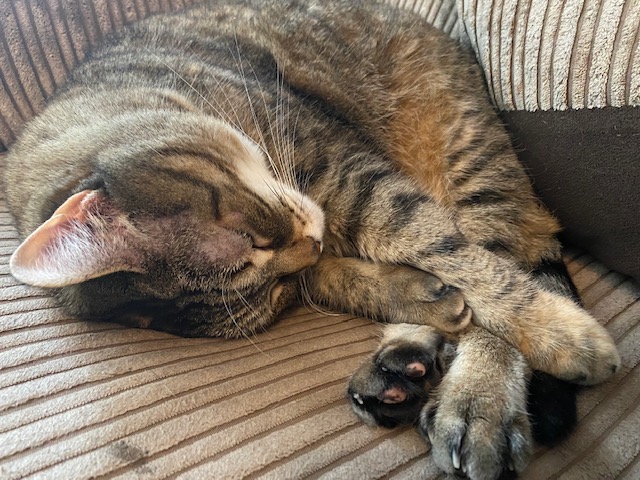Hi, I’m Dr. Lauren! Read my introduction to learn more about me and my two adventurous cats, Pancake and Tiller.
Note: This is part three of a three-part series. Click here to read parts one and two:
In the final article in this series, we will take a more in depth look at how acupuncture is actually believed to work, in general, and in some of the specific conditions.
Although, at present, no one fully understands how acupuncture works, there is a fairly conclusive body of both Western and Eastern research to say, unequivocally, that it does! As with any treatment modality, there will always be patients who don’t respond as predictably as others, but that is nothing new in the world of medicine.
How Does Acupuncture Work?
Many theories exist as to how acupuncture works: modulation of the nervous system, stimulation of fascia, and all sorts of interesting theories abound. In fact, speaking of fascia for a moment, it wasn’t until I began studying acupuncture that I had a new appreciation for this incredible substance. In vet school, we were taught it was merely a connective tissue: basically lifeless, and functioning as nothing more than a wrap holding our innards together. Today, acupuncture and many other medical modalities take advantage of the intricate complexities of fascia.
Interestingly, though, and similar to general anesthesia, we simply don’t fully understand how acupuncture works: simply that it does.

What Happens During an Acupuncture Session?
So, what actually happens during an acupuncture session?
- First, you generally schedule an initial consult with a veterinary acupuncturist, to allow for your cat to be examined, and the issues for which you are seeking treatment
- Next the acupuncturist will determine a treatment plan. Treatment plans are very individualized and can vary widely. Just as not all vets will have the exact same approach to, say, a vomiting cat or a kitten with a fever, so too do the options vary widely with acupuncture treatments. Often, an initial treatment for a cat will involve selecting a few main acupuncture points, to get the patient used to the treatment, and to also see what effects it will have.
- An initial treatment may be done the same day, or a different day, from the visit. The acupuncture session itself will generally last around 20 minutes.
- During the session, fine gauge needles are inserted into the selected acupuncture points, these needles are often imperceptible to the person (or pet) experiencing the treatment; other times their placement is described as warm, tingling, itchy, or a dull ache.
- Some acupuncturists will simply insert, and leave, the needles. Others will use them for additional stimulation, either by rotating them, or even by using them to provide electroacpuncture
- Treatments generally occur weekly, for a selected number of weeks, after which treatments are then scaled back as needed
I’ve used it quite successfully for emergency CPR in neonatal kittens, as well as for arthritis. I’ve treated one patient with a chronic limp that responded amazingly well after only a single session.
It is important to remember that acupuncture isn’t a substitute for other medical therapies, but is generally best approached as a co-therapeutic modality. But acupuncture opens the door to so many new options in the treatment of so many chronic diseases, not to mention acute ones, that it leaves a world of new veterinary medicine to explore. A world that is actually around 3,000 years old. These are exciting times, indeed.
Source link


